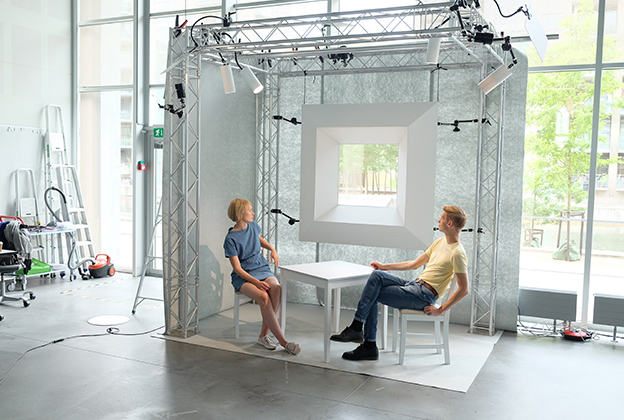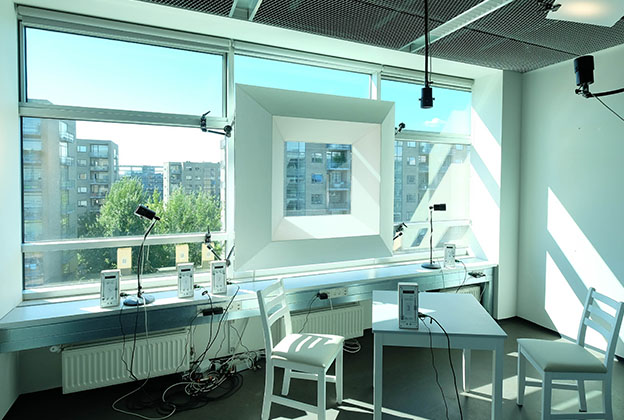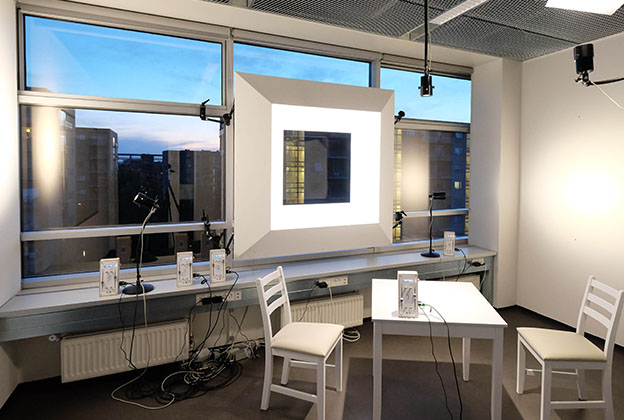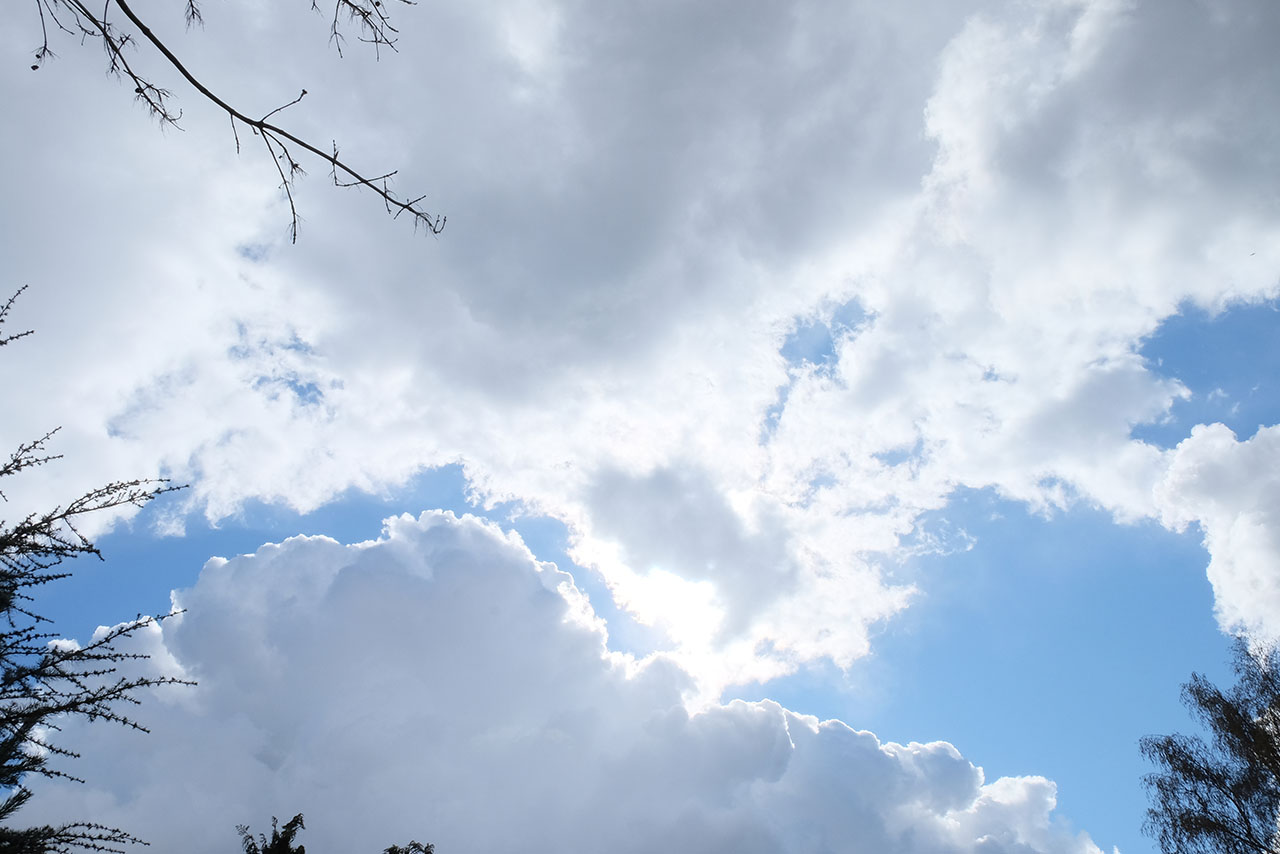
How to increase lighting quality and lower energy consumption
Yes! You can eat the cake and have it too… New research from the IT University in Copenhagen suggests that investing in high quality lighting can actually lower your energy consumption.
During the 21st century, reducing energy consumption and cutting costs have been the common priority, says Kjell Yngve Petersen, Head of Research, Atelier KHR Architecture, and previously associate professor at the IT University at Copenhagen.
”In research and development, there has been a primary focus on energy optimization using lighting control to meet the regulations of existing standards. Provided that the lighting design has fulfilled the requirements regarding light levels and glare, everyone’s been happy.”
The development has also been characterized by the general attitude that increased lighting quality requires higher lighting levels, leading to higher energy consumption and thus should become far too expensive.
”We wanted to prove that this is not the case. Today we know that access to good and stimulating light is crucial for how humans feel and perform in their daily lives. With access to new technology and light sources it really shouldn’t be any problem to fulfil these needs.”
The prize-winning study (it has already been awarded ‘best research project 2018’ by Danish research organization Elforsk) Energy optimization through adaptive lighting control and was conducted by Kjell Yngve Petersen and Phd Nina Rask in 2017 in collaboration with a range of research and industry partners; Spektra LED, Det Kongelige Danske Kunstakademis Skoler for Arkitektur, Design og Konservering, CreaSign, Grontmij and Kongshaug & Søn. It shows that a combination of LED-lighting and generative software can provide better lighting without increasing the energy costs. Used in the right way, possibly in combination with renewable energy sources, it can actually reduce energy consumption and contribute to a sustainable society – from an environmental and a human perspective.
”Light weather”
The dynamics of daylight is an important factor to human well-being. Our biology is designed to thrive from the constant changes in the daylights’ intensity and colour – sometimes barely noticeable – that Kjell Yngve Petersen describes as ”light weather”.
”With LED-technology and proper software it is possible to design lighting solutions with daylight as a model. We developed a self-generative software that mimics the natural light with small dynamic changes in speed, intensity and colour.”
The software was implemented in two different test environments in form of full scale architectonical mock ups. In the different tests, the subjects carried out various tasks related to everyday life and office work, responding to the light experience.
Compatible with renewable energy
The tests have resulted in prototypes that can be used to create lighting environments that react to the different changes in daylight and supports the different tasks of people’s daily lives.
”The study confirmed our theory that adaptive lighting control systems can actually lead to improved lighting quality with the possibility to lower energy costs. The algorithms of the software are well fit to take advantage of the irregularities that come with the production of renewable energy, such as wind. The adaptive software can follow the fluctuation of the energy production and use the peaks to initiate the fluctuation of the ‘light weather’ in a cost-effective way”, explains Kjell Yngve Petersen.
 "It is important to state that this is not about the technology – it’s all about the human lighting experience." Kjell Yngve Petersen, Associate Professor at ITU Denmark
"It is important to state that this is not about the technology – it’s all about the human lighting experience." Kjell Yngve Petersen, Associate Professor at ITU Denmark
Open source software
The next step is to evaluate the developed models in different real-life settings.
”It’s realistic to think that it should be possible to scale up this technology for more complex environments, like entire residential quarters, office buildings, schools and hospitals – implementing the benefits for humans and environment in a larger scale.”
The software developed for the research project is open source, Kjell Yngve Petersen explains, and is available for the industry's various stakeholders to use.
”Our wish is to help lighting designers create intelligent and easily operated high quality lighting designs based on individual preferences. It is important to state that this is not about the technology – it’s all about the human lighting experience. Lighting design should not be something that people have to adapt to. The light design should adapt to the people and support us in our daily lives!”
TEXTE AMELIE BERGMAN
PHOTO KJELL YNGVE PETERSEN
Actualités

Le bureau flexible – investissement à long terme pour les propriétaires immobiliers
En tant que propriétaire, répondre aux besoins des locataires tout en créant une gestion durable et fluide est souvent une équation complexe. Avec Control Track Versa, de nouvelles opportunités durables sont créées pour rationaliser le processus et offrir un bon éclairage aux locataires. Petter Berg travaille avec les préventes pour de vastes projets immobiliers à Fagerhult à Oslo. Les discussions avec les clients et les propriétaires immobiliers plus importants tournent souvent autour du problème de la satisfaction de plusieurs intérêts, à la fois pendant le processus de construction et après que les locataires ont emménagé. « Les intérêts des différents acteurs entrent souvent en conflit au détriment de la qualité de l’éclairage. Et ensuite, personne n’est ravi du processus ou du résultat », déclare Petter Berg, directeur des conseils en éclairage chez Fagerhult. Petter Berg quote Petter Berg a observé de près le développement de Control Track Versa et voit des opportunités futures pour les propriétaires immobiliers. Notamment, ceux qui travaillent activement sur la réutilisation et la durabilité et qui souhaitent créer des environnements attrayants pour les locataires existants et futurs peuvent rapidement atteindre une rentabilité dans des projets plus importants. « Être capable d’offrir aux locataires un bon éclairage sans remplacer l’ensemble du système à chaque déménagement est un énorme avantage en matière de durabilité en tant que propriétaire immobilier. Avec Control Track Versa, chaque luminaire peut être réutilisé tout au long de son cycle de vie. De plus, la piste elle-même peut changer de forme si le bureau change de design. » Les propriétaires immobiliers peuvent bénéficier des avantages de Control Track Versa pendant la construction. La piste peut être installée plus tôt pendant la construction et est totalement indépendant du futur mobilier et du choix des luminaires par le locataire. « Le fait que l’installation puisse se faire en principe à tout moment et ne nécessite pas que les locaux soient débarrassés de la poussière de construction ou qu’elle ait lieu juste avant l’achèvement du projet fait une grande différence. C’est une façon ingénieuse de gagner du temps », explique Petter Berg. En parallèle, les installations peuvent être effectuées dans des zones fixes telles que des couloirs, des ascenseurs, des toilettes et des lieux publics qui ne sont pas affectés par les choix des locataires. Avec moins de points d’installation, l’installation est également plus rapide et plus facile. « Le rail est doté d’un système flexible de 230 V, il n’est donc pas nécessaire d’utiliser des échelles de câbles ou du câblage supplémentaire. Par conséquent, Control Track Versa est également très adapté aux plafonds ouverts. Étant donné qu’il est totalement indépendant, le système est également à l’épreuve du temps. Chaque luminaire peut être complété par un capteur pour un contrôle intelligent de l’éclairage. » Selon Petter Berg, Control Track Versa comble le fossé entre les consultants en électricité et les architectes d’intérieur. Il voit clairement que cette piste peut être très utile dans les projets de construction de plus grande ampleur nécessitant l’assemblage de nombreux éléments. « Lorsque nous travaillons ensemble, cela se passe souvent très bien. Il est évident qu’un intermédiaire est nécessaire pour connecter le développeur, le consultant en électricité et l’architecte d’intérieur, et c’est là que Control Track Versa devient un intermédiaire important pour nous à Fagerhult. »






